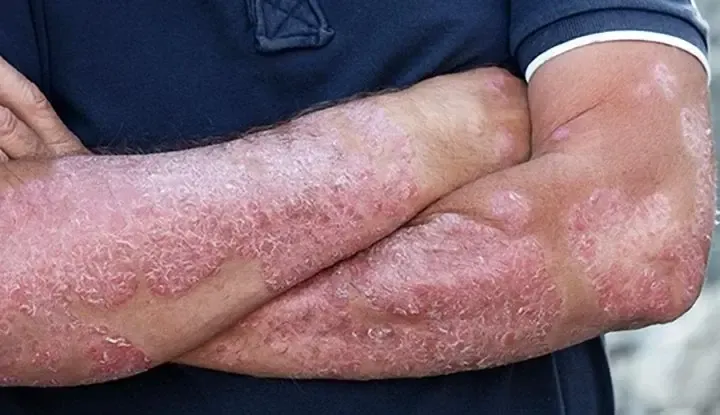Global Atopic Dermatitis Cases Projected to Reach 42.42 Million by 2033: New Findings

New Delhi, Dec 23 (NationPress) The worldwide occurrence of atopic dermatitis -- a persistent skin ailment -- is anticipated to rise to 42.42 million by 2033, based on a report released on Monday.
The study conducted by GlobalData, a firm specializing in data and analytics, indicated that the global load of 12-month diagnosed prevalent cases of atopic dermatitis is projected to grow at an annual growth rate (AGR) of 0.10 percent -- from about 42.02 million cases in 2023 to 42.42 million cases in 2033.
This increase will be notably observed in the seven major markets -- the US, France, Germany, Italy, Spain, UK, and Japan, as stated in the report.
The analysis highlights that cases of atopic dermatitis, commonly referred to as eczema, are on the rise due to the growing prevalence of environmental and lifestyle risk factors, along with a surge in the occurrence of atopic dermatitis in adults. This condition is characterized by inflammation, redness, and severe itching.
“The pathogenesis of atopic dermatitis remains ambiguous and is likely a result of the interplay of genetic predisposition, environmental and lifestyle challenges, and dysfunctional cell-mediated immunity,” explained Yixuan Zhang, an Epidemiologist at GlobalData.
According to epidemiologists at GlobalData, approximately 44 percent of mild 12-month diagnosed prevalent cases, 42 percent of moderate cases, and 14 percent of severe cases of atopic dermatitis were reported in 2023 across the seven major markets.
Atopic dermatitis is a multifaceted disease displaying various clinical manifestations and symptoms, which can vary based on patient demographics and the severity of the condition. In severe instances, atopic dermatitis is linked to sleep disturbances due to the itchy rashes that emerge during flare-ups, alongside depression, anxiety, and reduced productivity, all contributing to the global economic and disease burden.
“The highest prevalence is observed in childhood, followed by the middle-aged and older demographics. A positive correlation exists between a nation's gross domestic product (GDP) and the disease burden,” Zhang mentioned.
Nonetheless, new epidemiological trends are gradually emerging, such as an increase in atopic dermatitis prevalence in low-income nations and a notable rise in new adult-onset cases, particularly in the West,” Zhang added.









